06:11
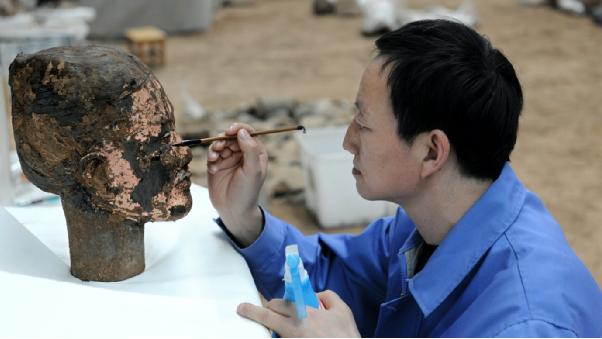
The terracotta army was discovered in northwest China's Shaanxi Province in 1974. It's part of the mausoleum of Qinshihuang – known as China's first emperor. When the life-sized clay figures were unearthed, most of them were damaged or ruined either by natural factors like floods or by human activities.
For nearly 50 years, experts have been working to restore the life-sized clay figures. The process of repairing a single piece usually takes months, or even years to complete. Lan Desheng has spent the past 25 years restoring the terracotta army.
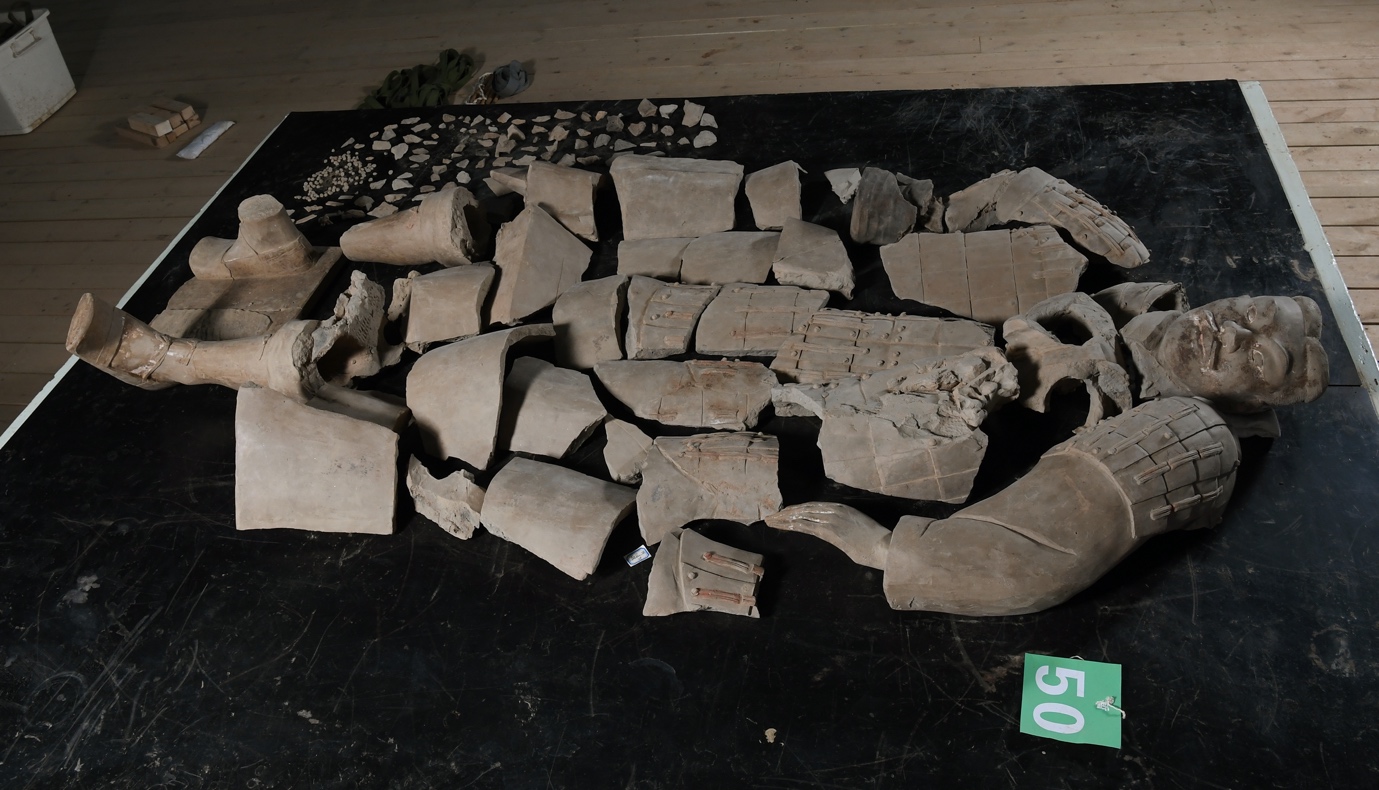
A pile of clay fragments unearthed at the terracotta army site. Restorers have to piece them together one by one, the process of which would take months or even years to complete. /The Emperor Qinshihuang's Mausoleum Site Museum
A pile of clay fragments unearthed at the terracotta army site. Restorers have to piece them together one by one, the process of which would take months or even years to complete. /The Emperor Qinshihuang's Mausoleum Site Museum
In an interview with CGTN, Lan said, "The Qin Dynasty's craftsmanship was perfect, with high aesthetic value. We follow a principle of minimum intervention, and use materials that are compatible with the relics. If we cannot piece them together, we would suspend the work until more advanced technologies become available."
Restoration experts use an ultra-depth-of-field microscope to examine each piece. Sometimes, they can identify fingerprints and names of ancient craftsmen, as well as the clay's original color. The paint easily falls off when exposed to air due to sudden changes in temperature and humidity. The team has developed a "paint layer reattachment" technique to restore the original color.
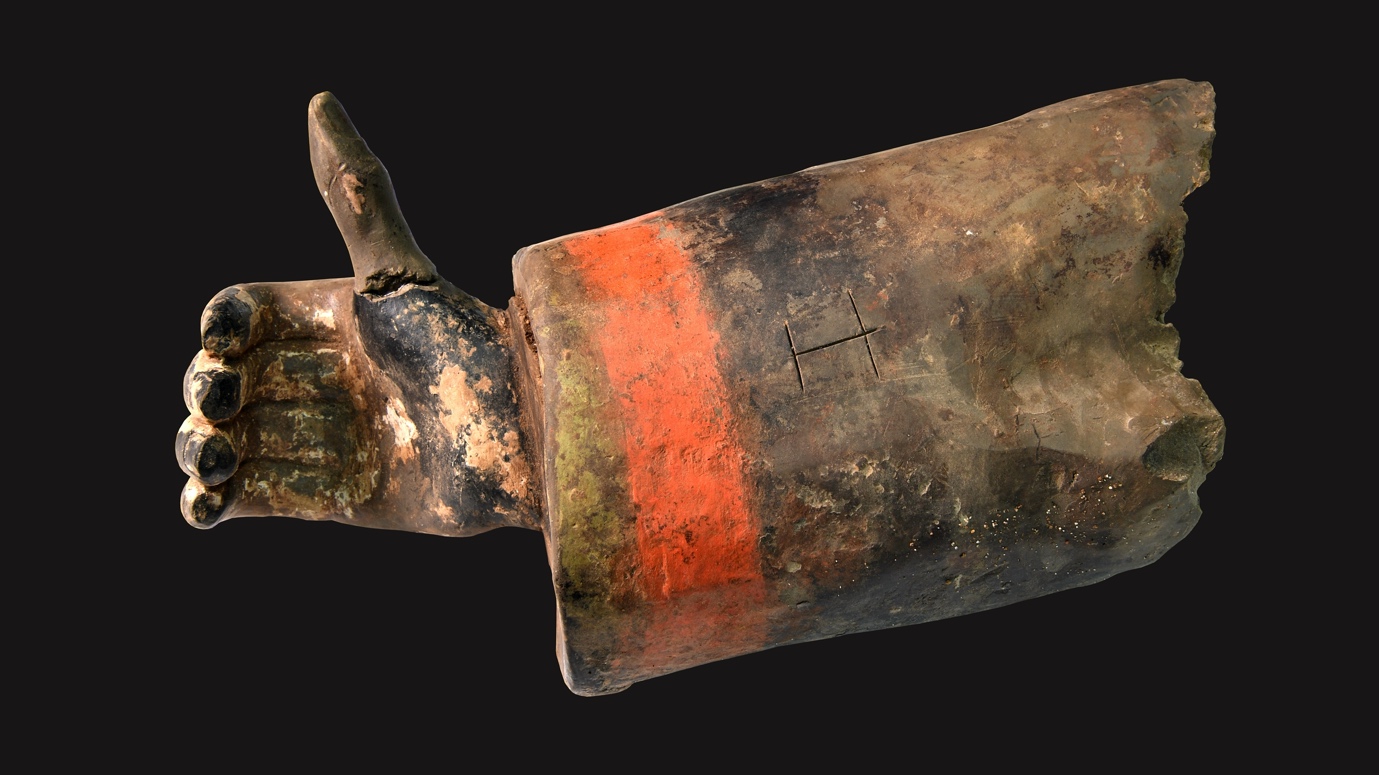
The character carved on the sleeve is supposed to be the name of the Qin Dynasty artisan who worked on this clay soldier. The pigments are made of minerals produced locally. /The Emperor Qinshihuang's Mausoleum Site Museum
The character carved on the sleeve is supposed to be the name of the Qin Dynasty artisan who worked on this clay soldier. The pigments are made of minerals produced locally. /The Emperor Qinshihuang's Mausoleum Site Museum
"Different pigments were used to paint terracotta warriors. They were first lacquered and then covered by three layers of pigment to give them a real-life look. If there's any pigment left on the clays, we extract them and then carefully re-apply them using modern technology," Lan explained.
The team has set up a recovery workshop at a corner of the terracotta army site, allowing the team to work more closely with excavators. There're around 8,000 clay soldiers and horses in the three tomb pits. But since excavation work started in the 1970s, less than one quarter of them have been repaired.
Whenever a terracotta warrior is unearthed, Lan and his team would go to the site and check it. "We take photos of all the fragments, and examine them carefully to find the missing parts. As excavation work continues, we cannot guarantee that we find the missing parts within two or three years. But we hope to recover and restore them," Lan said.
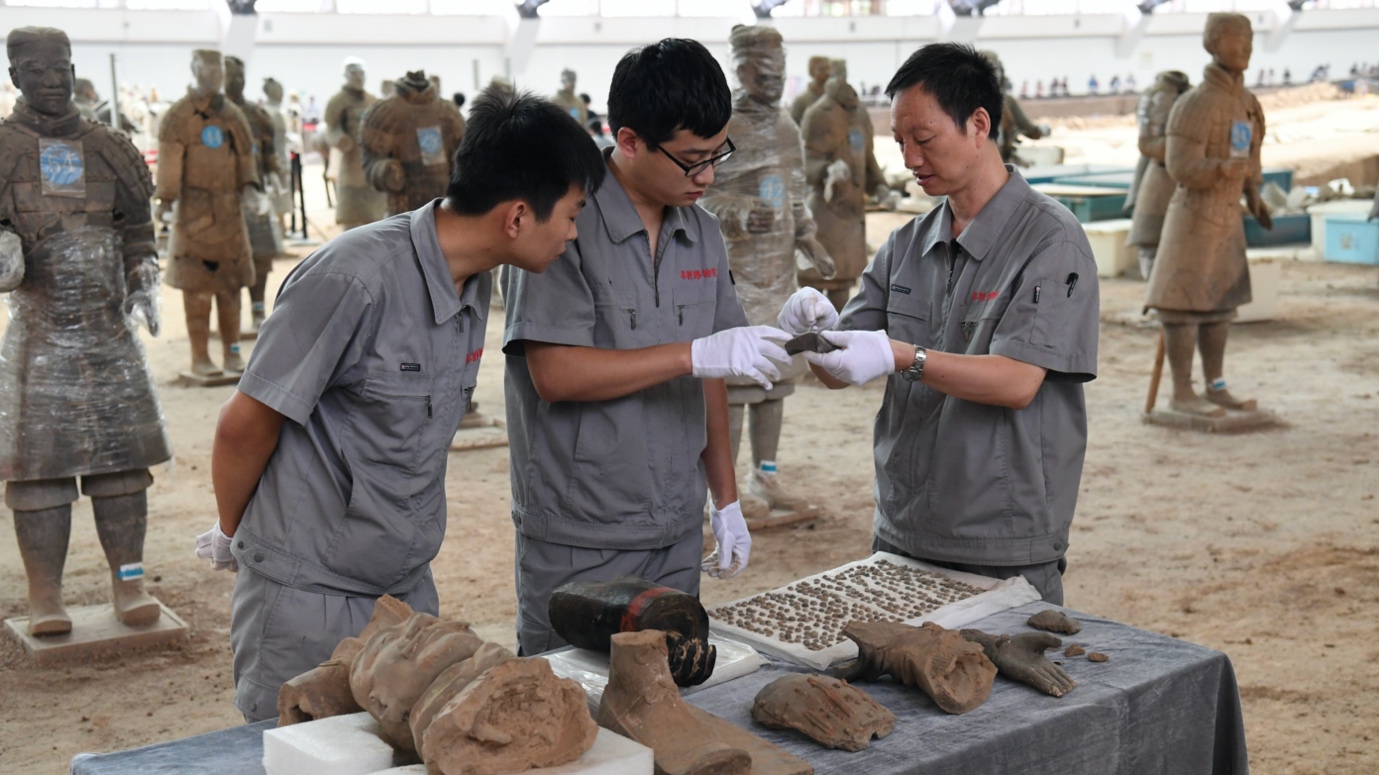
Lan Desheng (R1) works with his team members to restore the fragmented terracotta warrior. /The Emperor Qinshihuang's Mausoleum Site Museum
Lan Desheng (R1) works with his team members to restore the fragmented terracotta warrior. /The Emperor Qinshihuang's Mausoleum Site Museum
Each day, thousands of people visit the Emperor Qinshihuang's Mausoleum Site Museum. Lan took us around the mysterious graveyard. That's believed to be the first huge ancient mausoleum in China. Historians say over 700,000 laborers worked nearly 40 years to create it.
"The terracotta army is part of Emperor Qinshihuang's Mausoleum. It's the spiritual symbol of Chinese civilization, and reflects the superb wisdom and skills of ancient artisans. I hope that by restoring them, we're able to uncover historical facts, and revive the Qin Dynasty's culture and civilization," Lan said.
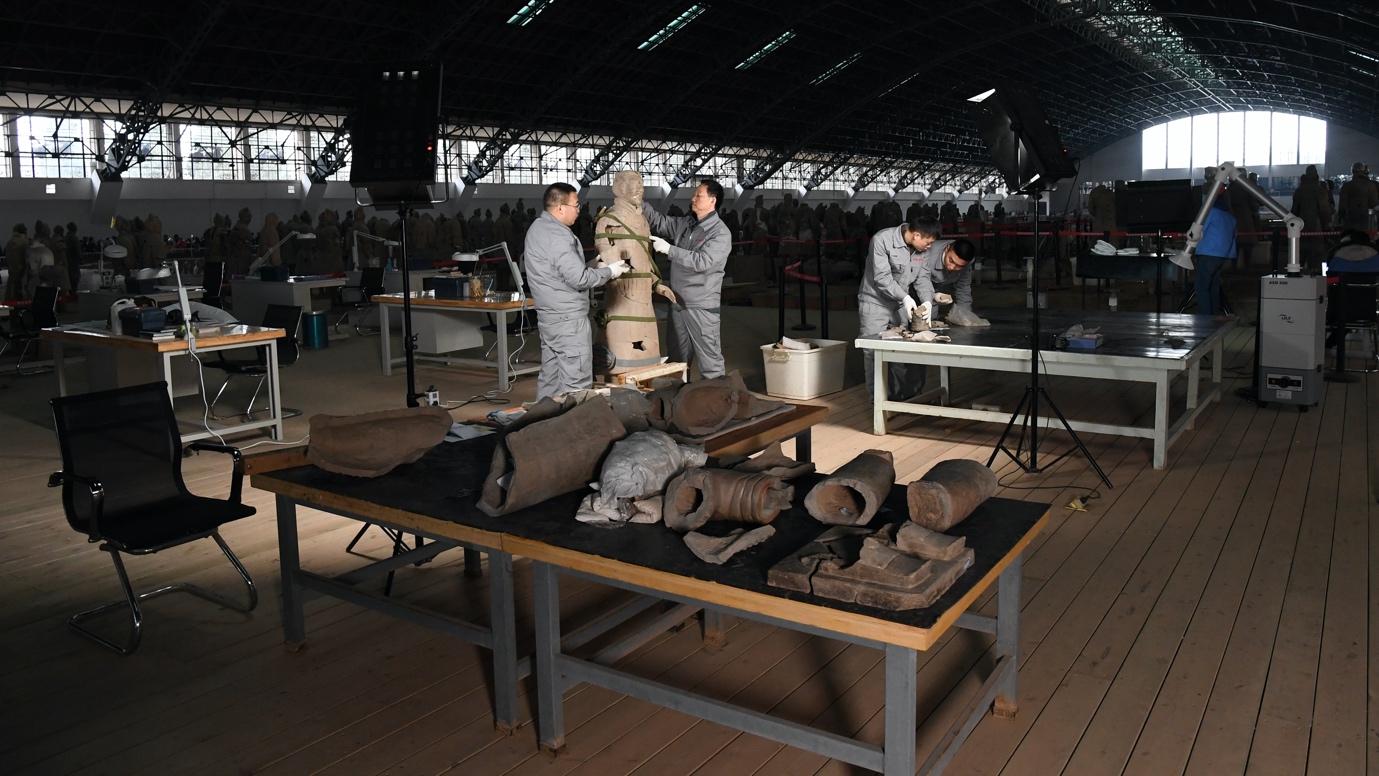
Lan Desheng and fellow restorers work inside the recovery workshop at a corner of the terracotta army site. People visiting the museum can check out on the repairing process from outside the space. /The Emperor Qinshihuang's Mausoleum Site Museum
Lan Desheng and fellow restorers work inside the recovery workshop at a corner of the terracotta army site. People visiting the museum can check out on the repairing process from outside the space. /The Emperor Qinshihuang's Mausoleum Site Museum
Over his 25-year career, Lan has helped restore more than 150 clay soldiers and horses. As more relics are discovered, the task becomes more challenging for a team of around 40 people. "There's an urgent need to involve more restorers, especially young ones with certain skills. I'd like to share with them what I've learned - that you have to make persistent efforts, and endure loneliness. It's also important to be diligent, and do things in a down-to-earth manner, so that you can contribute to protection of cultural relics," he said.
Lan describes his connection with the clay artifacts as a doctor-patient relationship. He said the terracotta army helped him grow and accompanied him throughout his career, and now, he is returning them in good health and shape.

